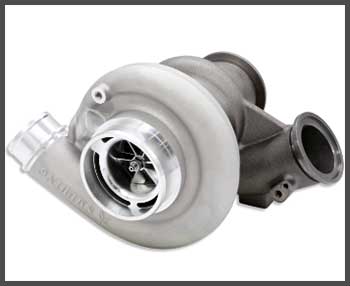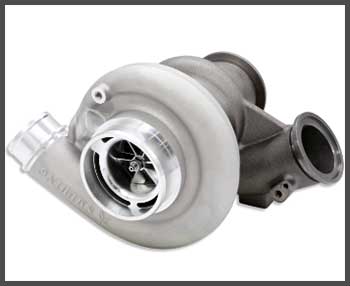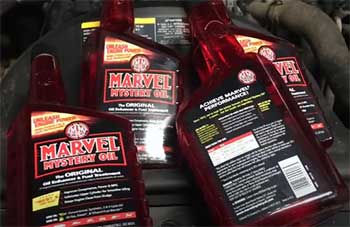The world of diesel engines is diverse and intriguing, with various configurations and components that make a difference in their performance. One significant element that defines the efficiency, power, and responsiveness of a diesel engine is the type of turbocharger used.
Specifically, in this article, we’ll delve into the nitty-gritty of VGT (Variable Geometry Turbo) and non-VGT turbos used in the 6.7 Powerstroke, a popular diesel engine. We’ll look at the pros and cons of each and aim to provide a clear understanding of which might suit your needs better.
A Brief Comparative Table
| Features | VGT Turbo | Non-VGT Turbo |
| Vane Structure | Variable, adjustable vanes | Fixed, non-adjustable vanes |
| Low-End Power | Excellent, thanks to variable vanes | Mediocre, due to turbo lag |
| High-End Power | Good, but might not match Non-VGT | Excellent, thanks to large gas passage |
| Fuel Efficiency | High, due to vane optimization | Lower, due to fixed vane structure |
| Emission Control | Better, reduces particulates & NOx | Less effective |
| Complexity | High, due to movable vanes | Lower, due to fewer moving parts |
| Reliability | Lower, due to complex structure | Higher, thanks to simplicity |
| Cost | Higher, due to complex manufacturing | Lower, due to simpler design |
The 6.7 Powerstroke and Turbochargers
Before we dissect the turbos, let’s touch on the 6.7 Powerstroke. It’s an exceptional diesel engine by Ford, known for its robustness, reliability, and impressive power output.
What makes the engine even more remarkable is the turbocharger, a key component that directly affects the engine’s power, efficiency, and fuel consumption.
Turbochargers can be classified into two primary types – VGT and non-VGT. But what’s the difference? And is one definitively better than the other? Let’s break it down.
VGT Turbo: Dynamic and Versatile

A VGT, or Variable Geometry Turbo, is a turbocharger that uses variable vanes to control the flow of exhaust gas into the turbo.
These vanes can adjust their angle, allowing for an optimized exhaust gas flow depending on engine speed.
This ability provides the turbo with better responsiveness and control, adapting to various driving conditions and engine loads seamlessly.
Pros of VGT Turbo
- Enhanced Low-end Torque: The flexible vane technology of the VGT turbo helps increase low-end torque, improving the vehicle’s off-the-line performance.
- Greater Fuel Efficiency: By adjusting to different driving conditions, VGT turbos can help to reduce fuel consumption.
- Better Emission Control: VGTs tend to reduce the amount of particulate matter and nitrogen oxide emissions, contributing to a cleaner and more sustainable environment.
Cons of VGT Turbo
- Complexity and Cost: VGTs are complex systems and typically cost more to produce, purchase, and maintain.
- Possible Vane Sticking: Over time, the variable vanes can suffer from carbon buildup, leading to sticking and performance issues.
Also Read: Differences Between Cloyes And OEM Timing Chains.
Non-VGT Turbo: Simplicity and Raw Power
Non-VGT turbos, or Fixed Geometry Turbos, operate on a simpler principle. They have fixed vanes that don’t adjust with changing conditions. This lack of complexity can sometimes work to their advantage.
Pros of Non-VGT Turbo
- Simplicity and Reliability: Non-VGT turbos have fewer moving parts, which may lead to fewer mechanical failures and lower maintenance costs.
- High-End Power: Though they may lack low-end torque, non-VGT turbos can deliver significant high-end power, ideal for high-speed applications or heavy towing.
Cons of Non-VGT Turbo
- Turbo Lag: Non-VGTs are notorious for turbo lag, particularly in lower RPM ranges, leading to slower response times.
- Less Fuel Efficiency: Non-VGTs aren’t as efficient as VGTs, resulting in increased fuel consumption.
Key Differences between VGT and Non-VGT Turbos
There’s a fascinating world of technology hidden under the hood of your vehicle, especially when we talk about turbochargers. VGT (Variable Geometry Turbo) and non-VGT turbos have some significant differences, primarily revolving around their structure, operation, and the performance they offer.
- Vane Structure and Operation

In VGT turbos, the vanes that direct the exhaust gas into the turbine can adjust their angle.
This is a unique feature allowing VGT turbos to optimize exhaust gas flow, which in turn improves turbo response across a wide range of engine speeds.
Non-VGT turbos, or Fixed Geometry Turbos, on the other hand, feature static vanes. They don’t adjust with changing driving conditions.
This simpler structure might seem disadvantageous, but it contributes to their reliability and raw power at high RPM ranges.
- Low-End Vs. High-End Power
VGT turbos shine when it comes to low-end torque. They can adjust the angle of their vanes to create a narrow passage for the exhaust gas when the engine RPM is low.
This increases the velocity of the exhaust gas hitting the turbine, which spins it faster and provides more power at low RPMs. This characteristic makes VGT turbos great for off-the-line performance and city driving, where low-end power is vital.
Non-VGT turbos, conversely, excel in delivering high-end power. They can’t adjust their vanes to improve low-end torque.
However, their fixed larger passage allows a substantial volume of exhaust gas to flow into the turbine at high RPMs. This creates immense power, making non-VGT turbos ideal for high-speed applications or heavy towing.
- Fuel Efficiency and Emissions
The ability of VGT turbos to adjust to various driving conditions can contribute to better fuel efficiency. By optimizing exhaust gas flow, they make the engine work less hard and burn less fuel.
In addition, they tend to reduce the amount of particulate matter and nitrogen oxide emissions, contributing to a cleaner environment.
Non-VGT turbos, without the ability to adjust exhaust gas flow, may not be as fuel-efficient. They are also less effective at reducing emissions.
- Complexity, Reliability, and Cost
VGT turbos, with their movable vanes, are complex systems. While they offer improved performance and efficiency, this complexity can lead to potential mechanical failures. In addition, they typically cost more to produce, purchase, and maintain.
Non-VGT turbos are simpler, with fewer moving parts. This simplicity can lead to better reliability and lower maintenance costs. They are also generally more affordable.
Also Read: Comparison of Fleece Cheetah And BD Screamer Turbos.
Frequently Asked Questions (FAQ)
There’s no definitive answer as it depends on your specific needs. If you need better low-end torque, fuel efficiency, and emission control, VGT could be the choice. If simplicity, high-end power, and reliability are your priorities, a non-VGT turbo might be better.
The primary difference lies in the vanes. VGT turbos have variable vanes that adjust to optimize exhaust gas flow based on engine speed. Non-VGTs have fixed vanes that don’t adjust.
The main drawbacks of VGTs are their complexity and cost. They can also suffer from vane sticking due to carbon buildup over time.
This depends on your needs. VGT turbos offer more flexibility and control, making them more efficient and better for varying driving conditions. However, they might not deliver the same high-end power as non-VGTs and can be more costly to maintain.
Conclusion
In the world of 6.7 Powerstroke, both VGT and non-VGT turbos have their places. It all comes down to what you value more – the dynamic versatility of the VGT, or the raw, high-speed power of the non-VGT.
Either way, understanding their pros and cons will help you make a well-informed decision about your turbocharger investment.

